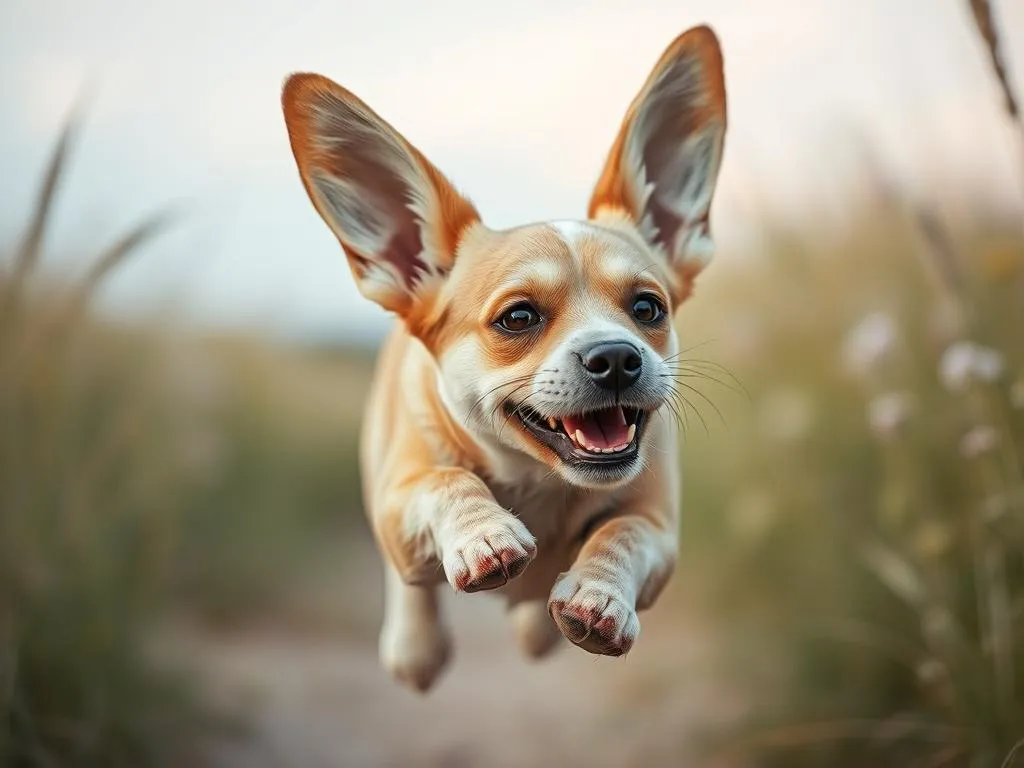
Dogs are some of the most beloved companions in our lives, offering unconditional love and joy. Understanding their behavior is crucial for ensuring their health and well-being. One behavior that might catch your attention is when your dog starts to hop like a bunny. It’s not only adorable but could also be a sign of various underlying issues or simply a quirky behavior. It’s essential to address any unusual behaviors to keep your furry friend healthy and happy.
Understanding Dog Behavior
Overview of Canine Behavior
Every dog has its unique personality and behavior patterns. Understanding the normal range of dog behaviors helps owners recognize when something is unusual. Common behaviors include barking, digging, and playing, which are generally nothing to worry about. However, any sudden changes in these behaviors can indicate stress or health issues.
Common Reasons for Unusual Behaviors
Dogs can express themselves in various ways, and sometimes unusual behaviors emerge due to:
- Stress and Anxiety: Changes in the environment, such as moving to a new home or the arrival of a new family member, can lead to anxiety.
- Physical Discomfort or Pain: If a dog is in pain, it may exhibit unusual behaviors, including hopping.
- Playfulness and Excitement: Sometimes, dogs are just having fun! Hopping can be a sign of excitement during play.
What Does It Mean When a Dog Hops?
Normal Hopping Behavior
In many cases, hopping is a typical behavior for dogs, especially when they are playful. A dog may hop during playtime, running after toys or engaging with other dogs. This playful hopping is often characterized by a lighthearted demeanor, wagging tails, and an overall joyful appearance. It’s essential to recognize that this kind of hopping is part of normal canine behavior.
Abnormal Hopping Behavior
However, not all hopping is playful. Abnormal hopping can indicate potential health or behavioral problems. It’s crucial to differentiate between normal and concerning behaviors. If your dog’s hopping seems excessive, is accompanied by other unusual signs, or occurs in situations where hopping is not typical, it may warrant further investigation.
Potential Causes of Hopping Like a Bunny
Medical Reasons
Joint Issues
One of the primary medical reasons for a dog to hop like a bunny could be joint issues. Conditions like arthritis or hip dysplasia can cause discomfort, leading dogs to adapt their movement, sometimes resulting in a hopping gait.
Neurological Disorders
Another potential cause is neurological disorders. These conditions can affect a dog’s motor functions, leading to unusual movements, including hopping. If your dog exhibits signs of coordination problems alongside hopping, consult a veterinarian.
Pain or Injury
Pain or injury is often a significant factor in abnormal canine behavior. If your dog has sustained an injury, you might notice them hopping to avoid putting weight on an affected leg. Look for signs of pain, such as whining or limping, which may accompany the hopping.
Behavioral Reasons
Playfulness
Hopping can also stem from pure playfulness. Dogs often jump around when excited or when engaging in playtime with their owners or other dogs. If the context is fun and playful, this is usually not a cause for concern.
Attention-Seeking
Sometimes, dogs hop to gain attention from their owners. If they notice that hopping elicits a reaction—whether it’s laughter, play, or treats—they may continue the behavior to receive more attention.
Anxiety or Stress
Anxiety or stress can manifest in various ways, including hopping. Dogs may hop when they’re nervous or trying to cope with a stressful situation. Identifying the triggers for your dog’s anxiety can help address this behavior.
Observing Your Dog’s Behavior
Signs to Monitor
When trying to determine the cause of your dog’s hopping, monitoring is essential. Look for changes in the frequency or intensity of the hopping. Accompanying symptoms, such as limping, whining, or reluctance to play, should also be noted. These signs may indicate that there’s more to the behavior than mere playfulness.
Keeping a Behavior Diary
Keeping a behavior diary can be invaluable in tracking your dog’s behavior. Note the following details:
- Time of Day: When does the hopping occur?
- Context: What is happening when your dog starts to hop?
- Duration: How long does the hopping last?
This information can help you identify patterns and provide your veterinarian with valuable insights if you need to seek professional help.
When to Seek Veterinary Help
Recognizing Warning Signs
If your dog exhibits any of the following symptoms, it’s time to seek veterinary attention:
- Persistent Hopping: If the hopping does not stop after playtime or continues for an extended period.
- Limiting Movement: If your dog seems reluctant to walk or engage in normal activities.
- Signs of Pain: Whining, limping, or showing sensitivity when touched.
Early intervention is critical in addressing potential health issues, so don’t hesitate to consult a veterinarian if you have concerns.
Preparing for the Vet Visit
When visiting the vet, being prepared can help ensure that you receive the best care for your dog. Consider the following:
- Questions to Ask: Inquire about the possible causes of the behavior and the recommended treatments.
- Information to Provide: Share your behavior diary and any relevant medical history to give your veterinarian a comprehensive overview of your dog’s situation.
Home Care and Management
Providing Comfort and Support
For minor issues, some home care and management strategies can help alleviate discomfort and stress. Here are some tips:
- Create a Comfortable Environment: Provide a cozy space for your dog to relax and feel safe.
- Engage in Gentle Play: Encourage low-impact activities that won’t exacerbate any potential injuries.
- Calming Aids: Consider using calming aids, such as anxiety wraps or pheromone diffusers, to help reduce stress.
Preventative Care
Regular veterinary check-ups are vital for maintaining your dog’s health. Ensure that vaccinations are up to date and discuss any concerns regarding joint health or behavior. Nutritional support is also essential; a balanced diet rich in Omega-3 fatty acids can promote joint health and overall well-being.
Conclusion
Understanding why your dog may hop like a bunny is crucial for their health and happiness. By observing their behavior, identifying potential causes, and knowing when to seek veterinary help, you can ensure that your furry friend leads a comfortable and joyful life. Always remember that addressing unusual behaviors promptly can make a significant difference in their overall quality of life. Let’s work together to promote a healthy lifestyle for our dogs through awareness and regular veterinary care.









